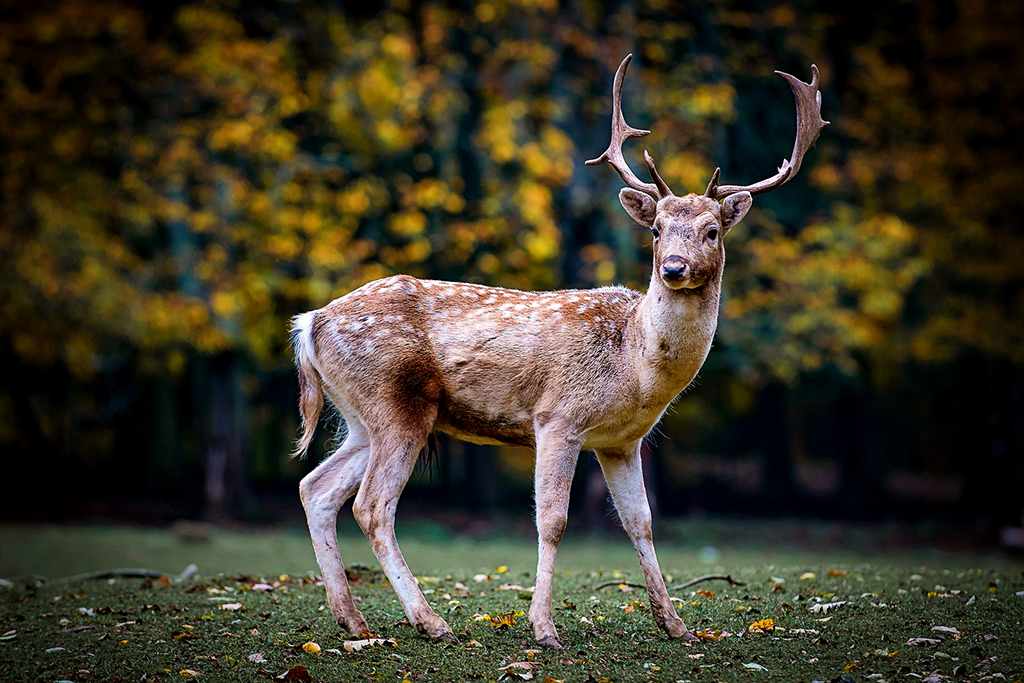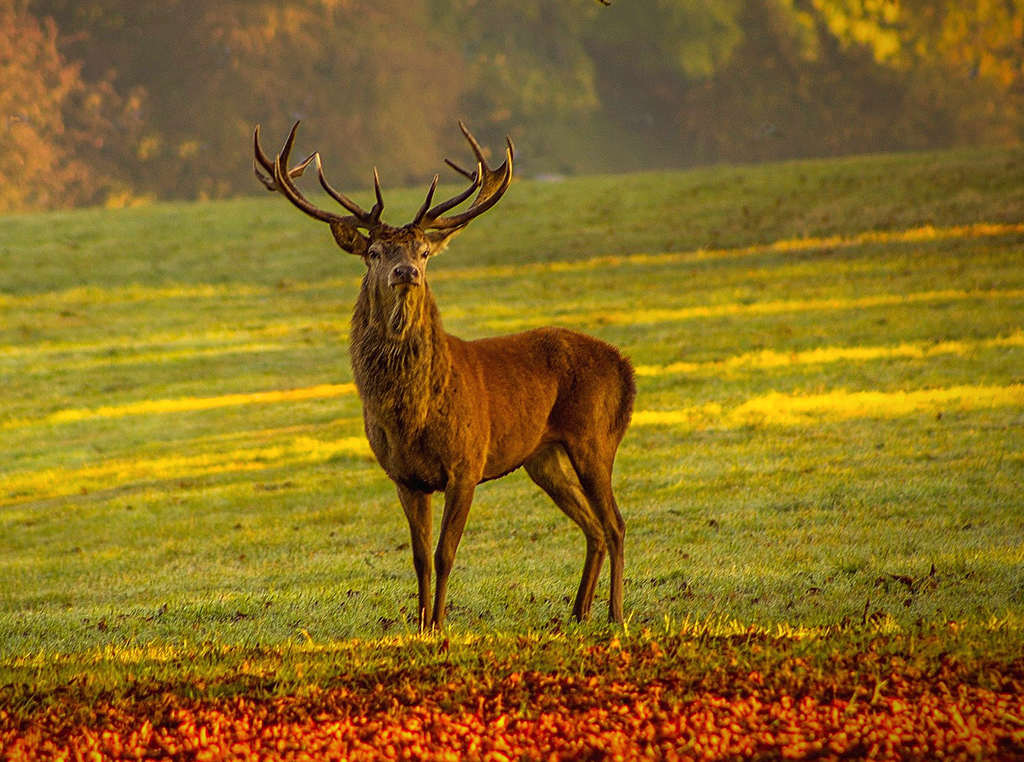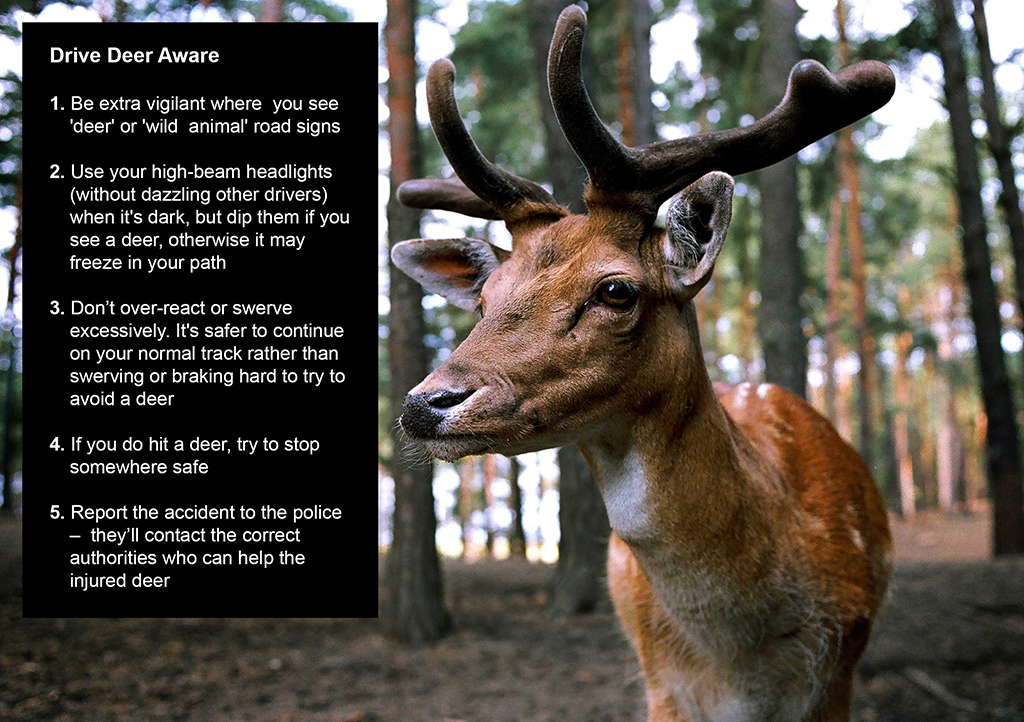With the clocks turning back this week, commuters across south west Scotland are being advised to look out for deer crossing local trunk roads.
The deer rutting season is at its peak and Scotland TranServ has identified a number of potential deer strike hotspots.
They have therefore recently installed temporary signage for the season at eight key locations identified within their Deer Management Plan, including the A701 at St Ann’s, the A78 at Stevenston and between Ardgowan and Largs, the A77 at Kilmarnock, our M77 carriageway between Pollokshields and Newton Mearns, the A737 at Johnstone, M74 at Junction 6 (Motherwell/Hamilton) and the M8 from Junction 11 to 13 (Stepps Road to Provan).
Isla Davidson, Scotland TranServ’s Senior Environmental Specialist, said: ‘Deer are often more mobile at two particular times each year: In May and June young deer disperse from breeding grounds to search for new territory of their own. Meanwhile, October and November is the rutting season for the larger deer species (red deer, fallow and sika), when adult males challenge each other for breeding rights.
‘Deer are particularly active around sunrise and sunset which, at this time of year, coincides with the peak commuter time when there are likely to be more vehicles on the road. Their darker winter coats make deer particularly difficult to spot, so please be extra vigilant as they can appear without warning out of the fields and woodland that border much of the region’s road network.’

Figures on the number of DVCs (Deer-Vehicle-Collisions) collated from the National Deer-Vehicle Collisions project suggest that while it is safe to say 40,000 deer are killed in vehicle strikes every year, due to under-reporting this figure could be as high as 70,000 across Britain as a whole. At the same time, conservative estimates of 400 injuries to vehicle passengers related to these collisions could well be nearer 1,000 annually.
Dr Jochen Langbein, who oversees the deer vehicle collisions project, added: ‘In Scotland, as in the rest of the UK and many other European countries, wild deer numbers have increased significantly over recent decades. Many people think most accidents with deer and vehicles occur on more remote Highland roads, but in Scotland at least 40 percent occur on A-class trunk roads or motorways, including across much of South West Scotland’s road network.’
It is estimated that in Scotland there could be as many as 9,000 collisions per year, resulting in anywhere between 50 and 100 human injuries, with the total cost of material damage and injury thought to be around £9.5million.
Across the UK, there are some 1.5million deer living in the wild, consisting six species, including Roe, Red, Sika and Fallow Deer, although only Roe Deer and Red Deer are native. These two species also make up the majority of the estimated 700,000 wild deer in Scotland, with up to 400,000 Red Deer and around 350,000 Roe.
Increasingly roe deer are becoming established within urban areas, prevailing in our large towns and cities such as Glasgow, Kilmarnock, Dumfries, Paisley, East Kilbride and Ayr. It is understood that the reason for this is the spread of villages, towns and cities into historic and current deer range. And, connecting these densely populated areas are our motorways and trunk roads.

Tommy Docherty, Scotland TranServ’s Network Control Centre Manager, added: ‘Our TRISS and ISU teams are particularly busy at this time of year, tackling the aftermath of deer collisions; not only dealing with the loss of life of this beautiful native animal, but the damage to cars and indeed injuries to drivers and passengers. It can be very distressing having to attend such incidents. The main function of the TRISS and ISU teams is to keep the road safe, but often they need to contact animal welfare experts directly to arrange for them to put any injured deer out of its misery.’
While Scotland TranServ would always advise drivers to remain vigilant to the potential of deer wandering onto our trunk roads there are other actions that motorists can take to help avoid a potential deer strike:
IAM Roadsmart’s Tim Shallcross said: ‘Deer are well camouflaged and make use of cover such as trees as a defence against predators. Maximise your vision by using your headlights at dusk and dawn – don’t rely on daytime running lights. Watch for the reflections of your lights in their eyes – two small points of light ahead could be a deer looking at you.
‘Deer are social animals – if one crosses the road ahead of you, slow right down because the rest of the herd may be close behind and will follow without looking for traffic. Finally, if deer stop in the road ahead, a single blast of the horn for a couple of seconds will often scare them away, but slow down first. Don’t assume the deer will move and make sure you can stop safely if it doesn’t.’

The top five driving tips are:
- Be extra vigilant where you see ‘deer’ or ‘wild animal’ road signs;
- Use your high-beam headlights (without dazzling other drivers) when it’s dark, but dip them if you see a deer, otherwise it may freeze in your path;
- Don’t over-react or swerve excessively. It’s safer to continue on your normal track rather than swerving or braking hard to try to avoid a deer;
- If you do hit a deer, try to stop somewhere safe;
- Report the accident to police – they’ll contact correct authorities to help injured deer
Angus Corby from Transport Scotland concluded: ‘We are the government agency responsible for the trunk road network, so it’s important that we help raise awareness of the potential dangers that deer can cause, especially at this time of year, whilst also being mindful of the welfare of the deer themselves.
‘Our operating companies prepare annual plans to manage the impact of deer across the trunk road network and work with local landowners to manage the issue. We liaise closely on all manner of wildlife issues with Scottish Natural Heritage and other national bodies, and also run an annual campaign on our network of variable message signs to remind motorists of the potential risk of wild deer crossing our roads.
‘This campaign provides tips on how to deal with deer on the roads and I would encourage drivers to follow that advice.’
TAGS

